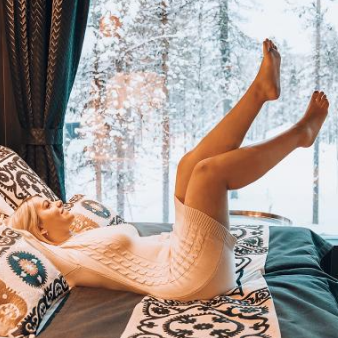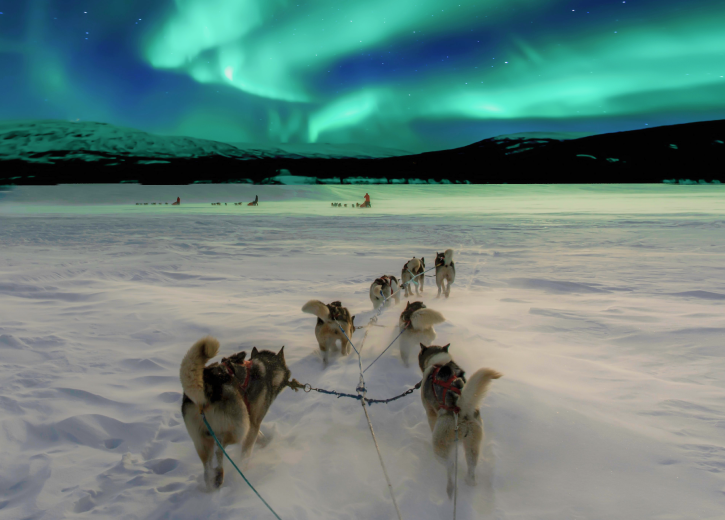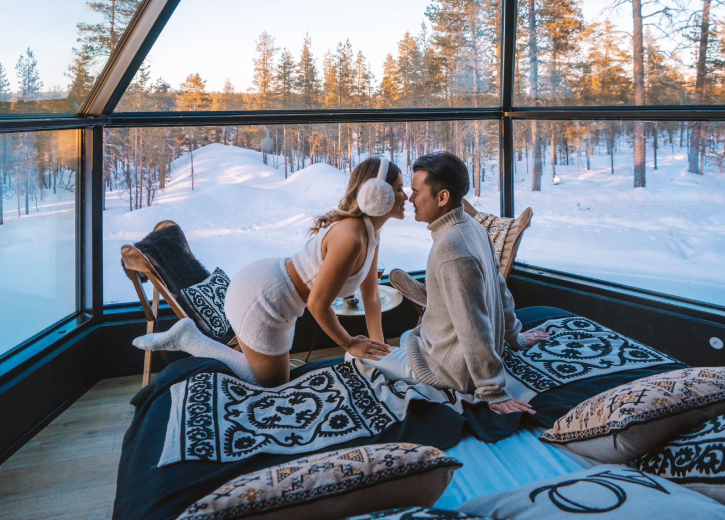Preparing for a trip to Lapland requires careful planning to make the most of this magical Arctic destination. You’ll need to pack proper thermal clothing, understand the seasonal timing for Northern Lights viewing, arrange local transportation, and book popular activities in advance. With temperatures frequently dropping below -20°C in winter, preparation is essential for comfort while experiencing Lapland’s enchanting snowy landscapes, reindeer encounters, and the magical aurora borealis dancing across the night sky.
Planning your magical Lapland adventure
Finnish Lapland offers a truly enchanting experience that requires thoughtful preparation to fully enjoy its Arctic wonders. The region’s pristine wilderness creates the perfect backdrop for unforgettable adventures, from witnessing the Northern Lights to gliding through snowy forests on husky-drawn sleds.
Start your planning process at least three months before your trip, especially if you’re visiting during the peak winter season from December to February. This allows ample time to secure accommodation in glass-ceiling igloos where you can marvel at the night sky from the comfort of your bed.
Research the specific area of Lapland you’ll be visiting, as distances between attractions can be considerable. The Arctic Circle runs through Lapland, and each location offers different experiences – from the fell highlands in the north to the forest regions in the south.
Consider creating a flexible itinerary that balances outdoor activities with relaxation time. Lapland’s extreme weather conditions might occasionally require adjusting plans, so building in some flexibility ensures you won’t miss out on essential experiences.
What should I pack for Lapland’s extreme weather?
For Lapland’s harsh winter climate, layering is absolutely essential. Begin with thermal base layers made of wool or synthetic materials that wick moisture away from your skin. Add a warm mid-layer such as a fleece or wool jumper, and finish with a windproof and waterproof outer layer.
Essential winter items include:
- Insulated, waterproof snow boots rated for extreme cold (-30°C or lower)
- Thermal socks (pack several pairs as they may get wet)
- Insulated, waterproof gloves or mittens (mittens are warmer)
- Thermal underwear (tops and bottoms)
- Wool or fleece mid-layers
- Waterproof, insulated snow trousers
- Heavy winter parka with hood
- Neck gaiter or scarf
- Insulated hat that covers your ears
- Hand and foot warmers for extended outdoor activities
Don’t forget to pack swimwear for sauna visits – a Finnish tradition you shouldn’t miss. Bring a headtorch for dark winter days and lightweight backpack for carrying essentials during excursions.
For electronics, cold temperatures drain batteries quickly, so pack extra batteries and keep them close to your body for warmth. A camera with proper settings for night photography will help capture the Northern Lights in all their glory.
| Temperature Range | Recommended Layers |
|---|---|
| 0°C to -10°C | Base layer + mid-layer + light outer jacket |
| -10°C to -20°C | Base layer + thick mid-layer + insulated jacket |
| Below -20°C | Base layer + 2 mid-layers + heavy-duty arctic parka |
When is the best time to visit Lapland for Northern Lights?
The optimal period for witnessing the Northern Lights in Lapland spans from late September through early April, with the peak viewing months being December through March. During these months, Lapland experiences “Kaamos” – the polar night when the sun barely rises above the horizon, creating ideal dark conditions for aurora viewing.
For the best chance of seeing this natural phenomenon:
- Visit during periods with minimal moonlight (new moon phases)
- Stay for at least 3-4 nights to increase your chances
- Be prepared to stay up late – aurora activity often peaks between 10 PM and 2 AM
- Choose accommodation away from light pollution, ideally with northern exposure
While winter offers the darkest skies, September, October, and March have milder temperatures and still provide excellent viewing opportunities. The shoulder seasons also tend to be less crowded, allowing for a more peaceful experience.
Download an aurora forecast app before your trip to receive alerts when activity is high. Remember that viewing the Northern Lights always depends on solar activity, clear skies, and a bit of luck, so plan other activities to enjoy regardless of whether the aurora makes an appearance.
How do I get around in Lapland once I arrive?
Transportation in Lapland varies by season, with winter conditions requiring special consideration. Rental cars are available at airports and major towns, but if you’re not experienced with winter driving, consider alternative options.
Your transportation options include:
- Rental cars (with winter tyres and preferably 4-wheel drive)
- Public buses (connecting major towns but with limited schedules)
- Organised tour transfers (convenient for popular attractions)
- Taxis (available but expensive for longer journeys)
- Airport transfers (arrange in advance to reach your accommodation)
If you choose to drive, be prepared for snow-covered roads and limited daylight hours in winter. Many rental companies offer vehicles equipped with GPS, engine heaters, and winter driving kits. Always carry a charged mobile phone, and inform someone of your route when travelling between destinations.
For visitors staying in remote accommodations, enquire about transfer services when booking. Many resorts offer pick-up services from airports or train stations, making your arrival smoother after a long journey.
Within small villages, most attractions are within walking distance, but proper winter footwear is essential for safely navigating snowy and icy pathways.
What winter activities should I book in advance?
Popular Lapland activities often sell out weeks or months ahead, especially during the peak holiday season from December to February. Book these experiences as soon as your travel dates are confirmed to avoid disappointment.
Activities that require advance booking include:
- Husky safaris – thrilling sled rides through snow-covered forests
- Reindeer farm visits and sleigh rides – a quintessential Lapland experience
- Snowmobile tours – ranging from short trips to full-day expeditions
- Northern Lights excursions – guided tours to optimal viewing locations
- Ice fishing experiences – a peaceful Arctic tradition
- Snowshoeing and cross-country skiing lessons – perfect for beginners
When booking activities, consider the physical requirements and duration. Some experiences like longer snowmobile safaris can be physically demanding, while others like reindeer sleigh rides are suitable for all ages and abilities.
Prioritise the experiences most important to you and schedule them early in your trip. This allows for rescheduling if weather conditions cause cancellations. Most outdoor activity providers include appropriate thermal gear, but confirm this when booking to avoid packing unnecessary items.
Wildlife enthusiasts should look for fox spotting tours, as these beautiful creatures with their thick winter coats are a highlight of Lapland’s fauna. Their adaptations to the harsh winter environment make them fascinating to observe in their natural habitat.
Essential takeaways for your Lapland journey
Preparing thoroughly for your Lapland adventure ensures you’ll make the most of this once-in-a-lifetime experience. Remember that the key to enjoying the Arctic environment is proper clothing, flexible planning, and embracing the unique rhythm of life in the far north.
Before departure, complete this final checklist:
- Confirm all accommodation and activity bookings
- Purchase comprehensive travel insurance that covers winter activities
- Download offline maps and aurora alert apps
- Pack medication and a basic first aid kit
- Inform your bank about travel to prevent card blocks
- Check weather forecasts for your specific destination
The Finnish concept of “sisu” – perseverance and determination – perfectly captures the spirit needed to embrace Lapland’s winter. The effort of proper preparation pays off when you’re comfortably watching the Northern Lights dance above, gliding through silent forests on a husky sled, or simply enjoying the peaceful Arctic landscape from the warmth of your glass-ceiling accommodation.
Lapland offers a profound connection with nature that stays with visitors long after they return home. By preparing thoughtfully, you’ll create space to fully immerse yourself in the magic of this extraordinary destination.



